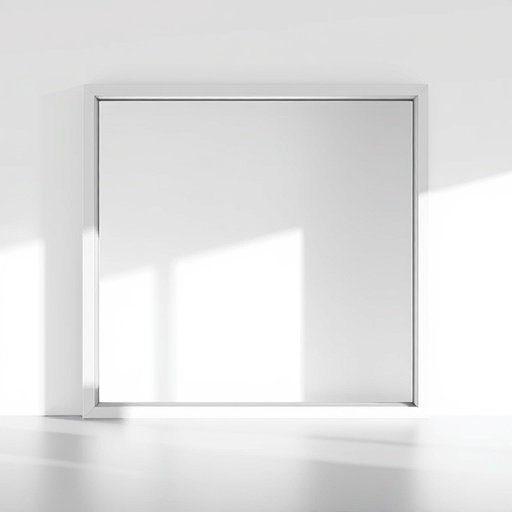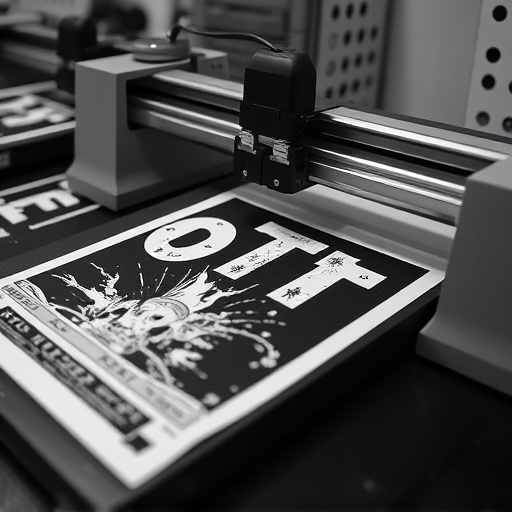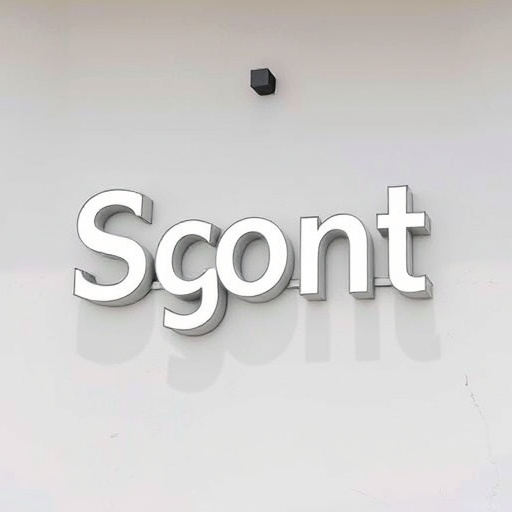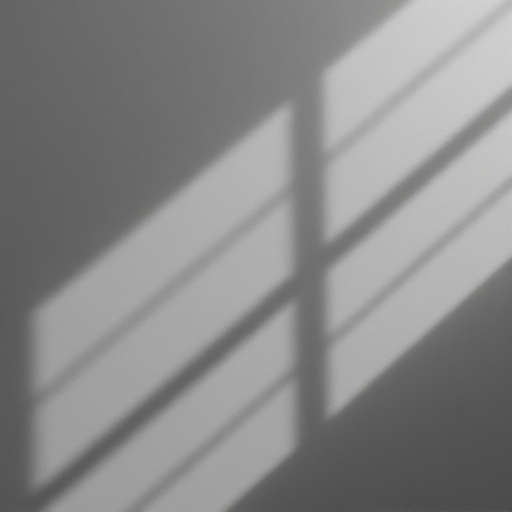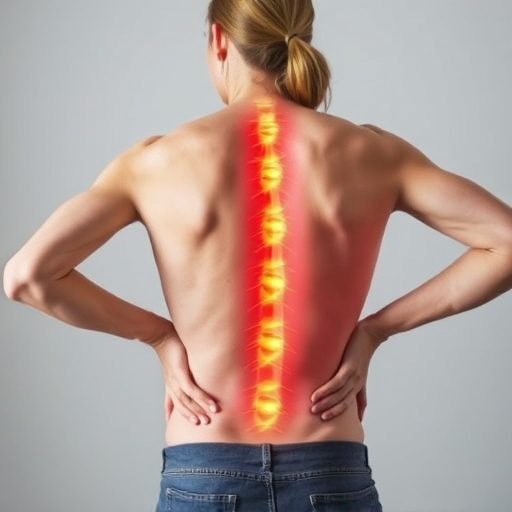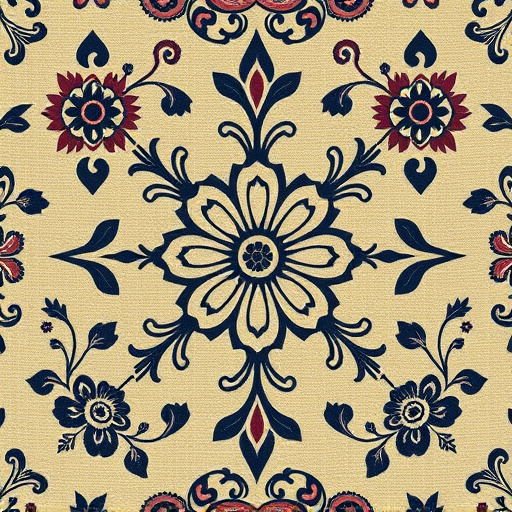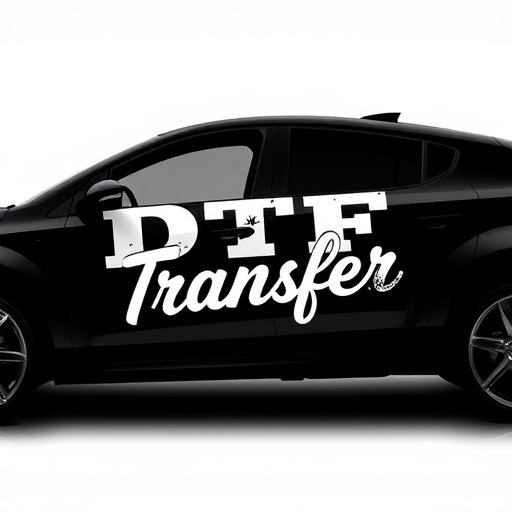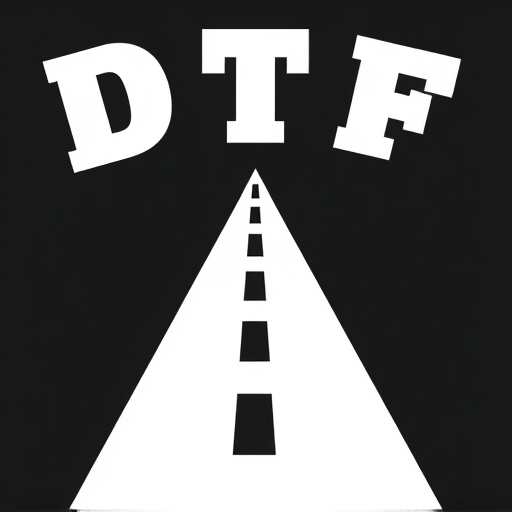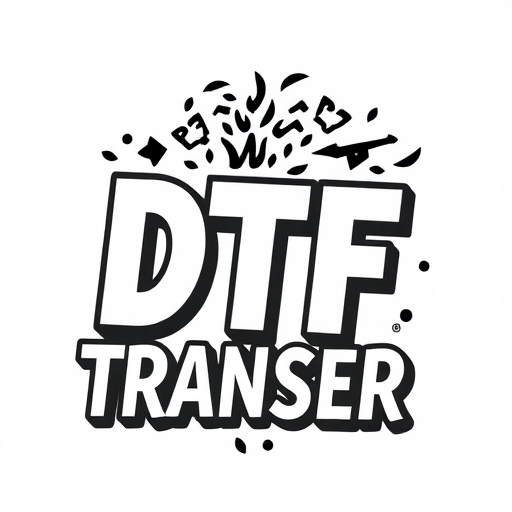Direct-to-Film (DTF) printing and dye sublimation are two advanced print technologies. DTF directly applies dye to surfaces via specialized heads, offering fast, cost-effective, high-quality prints on fabric, paper, and plastics for short runs and custom designs. Dye sublimation uses heat to transfer dye into porous materials like textiles, providing vibrant, detailed large-format prints suitable for longer-lasting applications like banners and art. DTF is ideal for quick customization in clothing and textiles, while dye sublimation excels in professional photo printing and fine art reproduction.
In the world of printing, two distinct methods stand out for creating high-quality images on various surfaces: Direct-to-Film (DTF) transfer and Dye Sublimation. This article delves into these techniques, offering a comprehensive guide for understanding their unique approaches. From DTF’s direct application to dye sublimation’s heat-sensitive colors, we explore key differences, ideal applications, and help you choose the best method for your specific needs, ensuring optimal DTF prints or vibrant dye sublimation results.
- Understanding Direct-to-Film (DTF) Transfer: A Brief Overview
- The Process of DTF Transfer: How It Works
- Dye Sublimation Printing: Unveiling the Technique
- Key Differences Between DTF and Dye Sublimation
- Applications and Uses of Each Printing Method
- Choosing the Right Print Method for Your Needs
Understanding Direct-to-Film (DTF) Transfer: A Brief Overview

Direct-to-Film (DTF) transfer is a printing process that has gained significant traction in the world of print media, especially for creating high-quality prints on various materials like fabric, paper, and plastics. This technology enables the application of dye directly onto the surface of the medium without the need for intermediate substrates or coatings. DTF offers several advantages, making it a preferred choice for many printers and designers. The process involves advanced printing heads that deposit precise amounts of dye onto the target material, allowing for vibrant colors and intricate details in the final prints.
DTF Printing is renowned for its ability to produce sharp images with exceptional color accuracy, ensuring DTF prints stand out for their visual appeal. This method is particularly useful for short-run productions, custom designs, and on-demand printing services as it offers fast turnaround times without compromising quality. Additionally, DTF’s direct approach eliminates the need for complicated lamination or coating steps, making it a cost-effective solution for various applications, from promotional merchandise to artistic reproductions.
The Process of DTF Transfer: How It Works

The Direct-to-Film (DTF) transfer process is a cutting-edge method for creating high-quality prints on various materials. It involves a sophisticated system where an image is first transferred to a special film, which then acts as a temporary carrier. This film is precisely heated and pressed against the desired substrate, allowing the ink to melt and bond with the surface, resulting in vibrant DTF prints. The process ensures precise color reproduction, making it ideal for demanding applications like professional photography and custom apparel.
Unlike traditional printing methods, DTF offers a unique advantage by eliminating the need for mid-process drying or curing stages. This direct approach not only speeds up production but also enhances the final product’s durability and longevity. With its ability to produce sharp details and accurate color matching, DTF transfer has become a preferred choice for creating custom designs on items like phone cases, mugs, and textiles, offering businesses and individuals a versatile and efficient printing solution.
Dye Sublimation Printing: Unveiling the Technique

Dye Sublimation Printing is a cutting-edge technique that has revolutionized the way we reproduce images and designs on various materials, particularly in the realm of DTF Transfer applications. This innovative process involves infusing heat and pressure onto dye-impregnated polyester films, causing the dyes to sublimate—a fascinating transformation from solid to gas state without passing through a liquid phase. As a result, this method yields incredibly vibrant, sharp prints with an unmatched level of detail.
The beauty of DTF Printing lies in its versatility; it can be applied to diverse substrates like fabric, paper, and even metal, making it a favorite among professionals in the textile, graphic design, and sign-making industries. By controlling temperature and pressure, printers can achieve flawless image reproduction, ensuring every color appears as intended, from rich blacks to radiant whites and everything in between. This meticulous process ensures that DTF prints stand out for their exceptional quality and longevity.
Key Differences Between DTF and Dye Sublimation
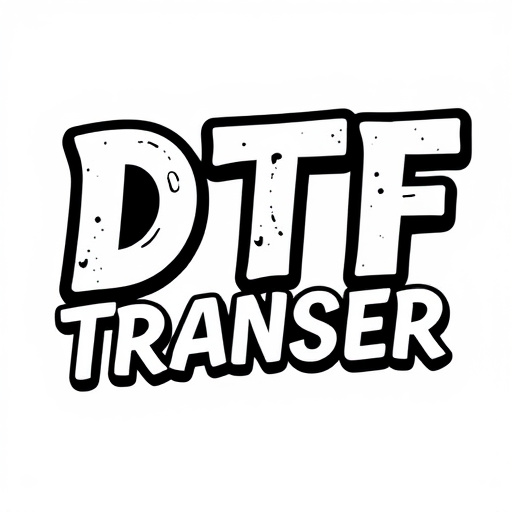
Direct-to-film (DTF) transfers and dye sublimation printing are two distinct methods for creating high-quality prints on various materials, each with its unique advantages and limitations. One of the key differences lies in their production process. DTF involves applying ink directly onto a film, which is then bonded to the substrate during heat treatment. This method offers excellent color accuracy and vibrant results, especially for complex designs. It’s particularly suitable for short-run productions as it allows for easy customization and rapid turnaround times.
On the other hand, dye sublimation printing uses heat to transfer dye from a solid state (dye particles) into a gas, which then permeates the porous surface of the material. This process results in incredibly smooth, full-color prints with exceptional clarity. Dye sublimation is ideal for larger runs as it maintains consistent quality and color even when producing hundreds or thousands of identical prints. It’s commonly used for applications that demand high-definition imagery, such as banners, posters, and textile printing.
Applications and Uses of Each Printing Method
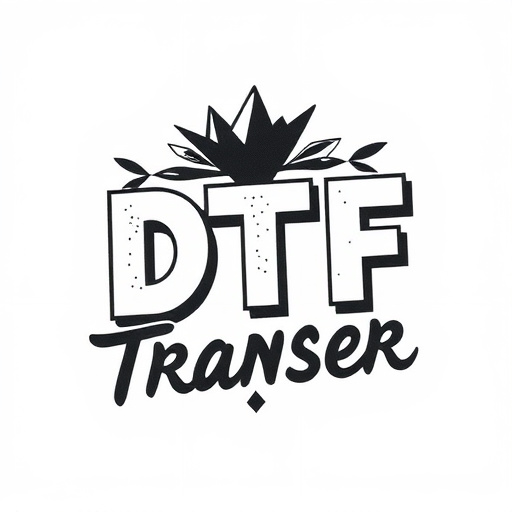
Direct-to-film (DTF) transfers and dye sublimation printing are two distinct methods with unique applications in various industries. DTF transfers are particularly favored for their versatility, finding extensive use in clothing and textile production. This process allows for the application of intricate designs and graphics directly onto fabric, making it ideal for custom apparel, promotional merchandise, and even art pieces. The ability to produce high-quality prints on demand has made DTF a popular choice for small businesses and individual artists.
On the other hand, dye sublimation printing is commonly employed in professional photo printing and fine art reproduction. It delivers exceptional color accuracy and detail, making it suitable for creating large-format prints, canvas artwork, and even heat-transfer applications like phone cases and mugs. Dye sublimation offers a vibrant and lasting solution for displaying images and designs, ensuring their longevity without fading or cracking over time. These printing methods cater to different needs, with DTF transfers excelling in customization and speed, while dye sublimation takes the lead in delivering professional-grade prints with intricate details.
Choosing the Right Print Method for Your Needs

When deciding between direct-to-film (DTF) transfers and dye sublimation printing, understanding your specific needs is key. DTF transfers offer a cost-effective solution for producing high-quality prints on various materials, including fabric and metal. This method is ideal for small to medium-sized batches, allowing for quick turnaround times without breaking the bank. Additionally, DTF prints provide vibrant colors and sharp details, making them suitable for promotional items, personalized gifts, and short-run productions.
On the other hand, dye sublimation printing is a versatile process that delivers exceptional results on both light and dark surfaces. It’s perfect for larger orders where cost-efficiency isn’t the primary concern. This technique ensures prints are long-lasting and resistant to fading, making it popular for high-end merchandise, branded apparel, and items intended for prolonged use. Consider your project scope, budget, and desired print quality to select either DTF transfer or dye sublimation printing as the optimal method for achieving your desired outcomes.
